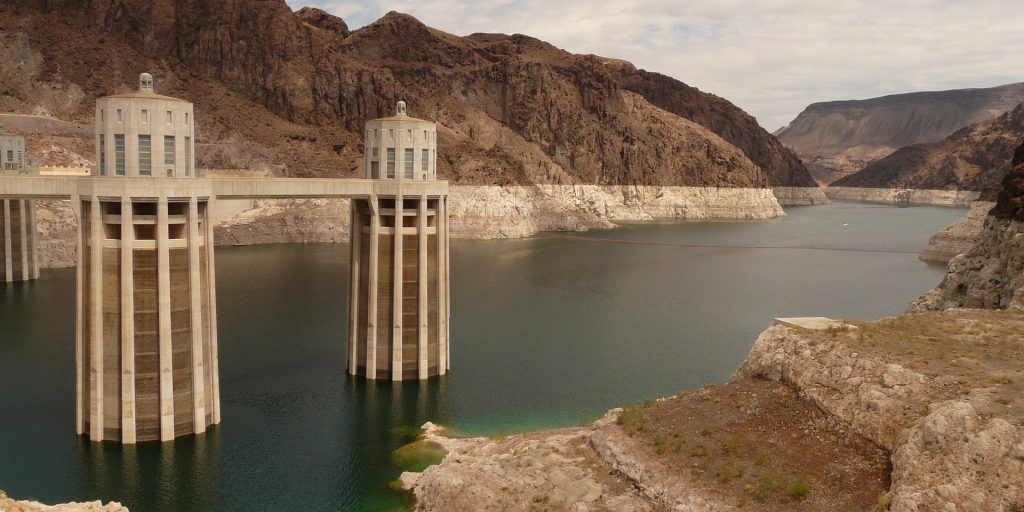Addressing water waste is one way cities and counties can increase resilience against drought conditions
In this internet-of-things era, municipal infrastructure is becoming increasingly smart—from electrical grids to bridges and city water systems, which can keep public administrators connected and reduce chronic water waste. The latter application is particularly important given the drought conditions experienced by many western states these days and the global implications of climate change.
“Fresh water is a critical and rapidly dwindling resource. Worldwide water shortages have led the UN to define its sixth Sustainable Development Goal as ‘Ensuring the availability and sustainable management of water and sanitation for all people,’” according to a report issued by Water Intelligence, an artificial intelligence company that focuses on water preservation. The publication, “The Carbon Impact of Water,” estimates that an average of around “25 percent of the water entering a building, construction site or industrial facility goes to waste.”
Chris Spain, CEO of the smart water management business HydroPoint, reflected a similar perspective.
“It’s systemic—from the supply and treatment side. They’re wasting anywhere from 5 to 25 percent,” Spain said. But despite the waste, which is bad for the environment and taxpayers checkbooks, “Everybody is rather water blind. Water is one of those things that people don’t really care about until it’s absolutely an emergency. Existentially, head in the sand, ostrich syndrome.”
HydroPoint helps nearly 30 cities including Los Angeles and New York City manage their water systems via automated smart technology, saving cities about 85 billion gallons so far. While failing infrastructure is “The huge, 5,000 pound gorilla in the room” when it comes to water waste, Spain said human error is usually the primary issue when it comes to water waste
As an example, Spain said his company—which connects smart water valves, sensors and flowmeters to a digital interface and software that can detect leaks, control valves and streamline irrigation practices—was hired to oversee a smart water system installation in a community with three municipal car washes.
“One was $150,000 more per year in water charges then the other ones,” he said. In the basement, they found a cut-off water faucet that “been pouring water down a drain for the last year.”
Beyond the monetary savings and stymieing the potential for catastrophic damages, cutting back on water waste is hugely beneficial in the fight against climate change. Water production inflicts a huge toll on the natural environment because it uses so much energy, according to Water Intelligence’s report.
“Water-related energy use accounts for a full 13 percent of all U.S. electricity consumption,” the report says. “For many local governments, water and wastewater are the largest consumers of energy, typically accounting for 30-40 percent of total energy consumed, and in some cases reaching as high as 60 percent.”
And as population centers become denser, another major factor, the water problem faced by many states could be exacerbated. Looking ahead, Spain estimated by 2030, “there’ll be a 40 percent gap in fresh water versus demand—that’s just an unthinkable number.”
The implications of this extend beyond human consumption. Water and energy production are intrinsically reliant on each other. When one fails, the other system does, too.
“You can’t have energy without water, and you can’t have water without energy,” Spain said, noting, “Here in California, they’re asking people, indiscriminately, whether you’re wasting water or not, to reduce your use by 20 percent.”
But in his perspective, water usage isn’t the biggest problem cities and counties should address: “You should really be looking at reducing your waste by 90 percent,” he said. “I don’t think we have a water problem, I think we have a waste problem.”
To cut down on water waste, along with smart technology that can alert managers of hidden leaks and unseen waste, Water Intelligence’s report recommends that organizations consider installing low-flow toilets and automated urinals; sub-meter to assign the cost of water to tenants, creating awareness of leaks and waste; and assume appliances will malfunction.
“The environmental impact of water misuse and waste is a critical challenge. Where in the past water was viewed as a scarce resource in some locations and as a plentiful asset in others, it can no longer be taken for granted. Inefficient use of this resource creates shortages and increases greenhouse emissions, sometimes more than notorious emitters such as cars or transatlantic flights,” the report says.




















